Petroushka, which Paraskeva Clark (1898–1986) considered her most important painting, was the Russian-born painter’s first attempt at a large figural composition with political content and exemplifies the direction in which she wished to develop her work. It brings together Clark’s childhood memories of puppet theatre in the streets of Saint Petersburg and her response to a violent clash between police and striking steelworkers in Chicago in which five workers were killed. Clark taped the article (“Five Steel Strikers Killed in Clash with Chicago Police,” Toronto Daily Star, June 1, 1937) to the back of the canvas to document the source.
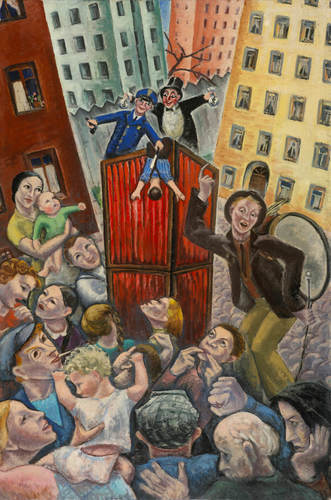
Paraskeva Clark, Petroushka, 1937
Oil on canvas, 122.4 x 81.9 cm, National Gallery of Canada, Ottawa
She transformed the story of Petroushka (the Russian equivalent of Punch or Pulchinello) to describe the plight of the worker, subjugated by the interests of capitalism (the banker) and its enforcers (policeman). The viewer looks down on the scene in a cobblestoned yard between apartment blocks. The crowd responds to the performance with catcalls and clenched fists—an anti-fascist symbol of unity, strength, and resistance used here to indicate the artist’s support for their cause.
Clark had high expectations for Petroushka. She first showed it at the Canadian Group of Painters exhibition in 1937, along with Wheat Field, 1936, and Bathing the Horse, 1937, a troika of Russian-inspired work. It remained in her possession until the National Gallery purchased it in 1976.
This Spotlight is excerpted from Paraskeva Clark: Life & Work by Christine Boyanoski.
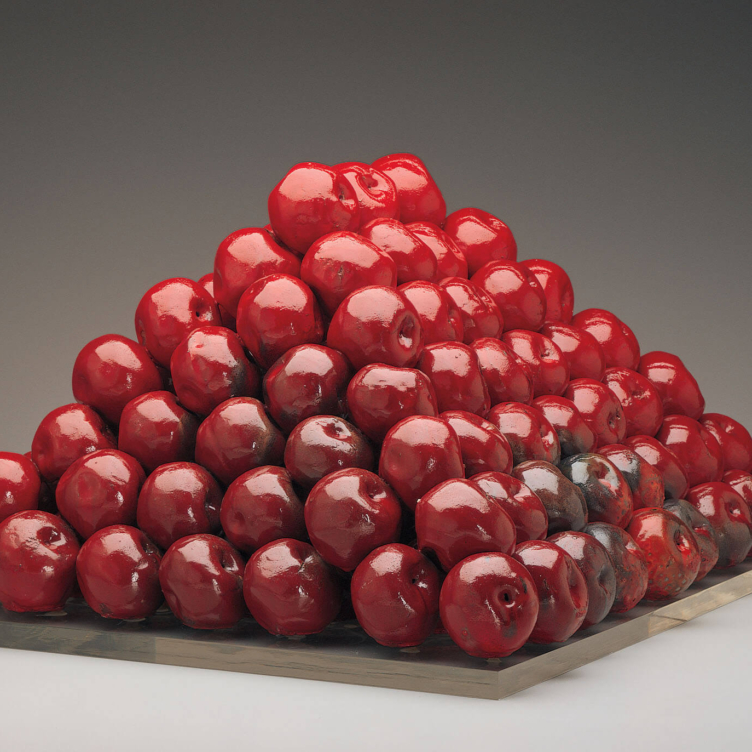 Pyramid Scheme
Pyramid Scheme
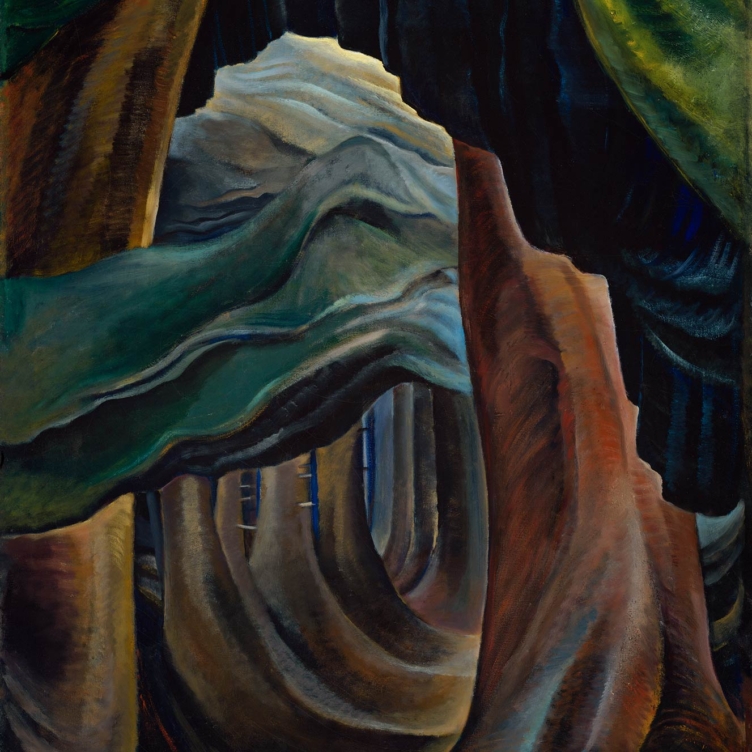 Transportive Trunks
Transportive Trunks
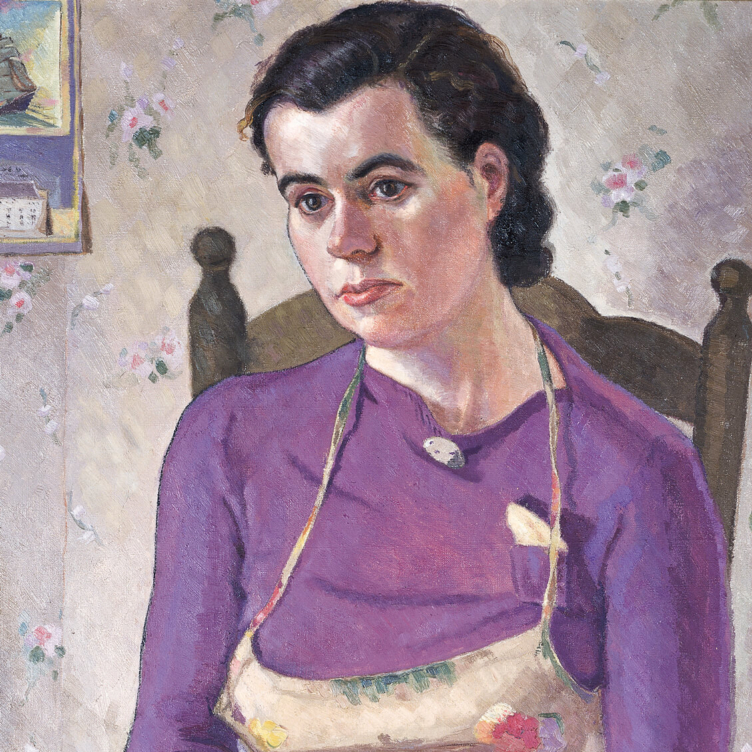 The Military Mate
The Military Mate
 Looking Up on the World
Looking Up on the World
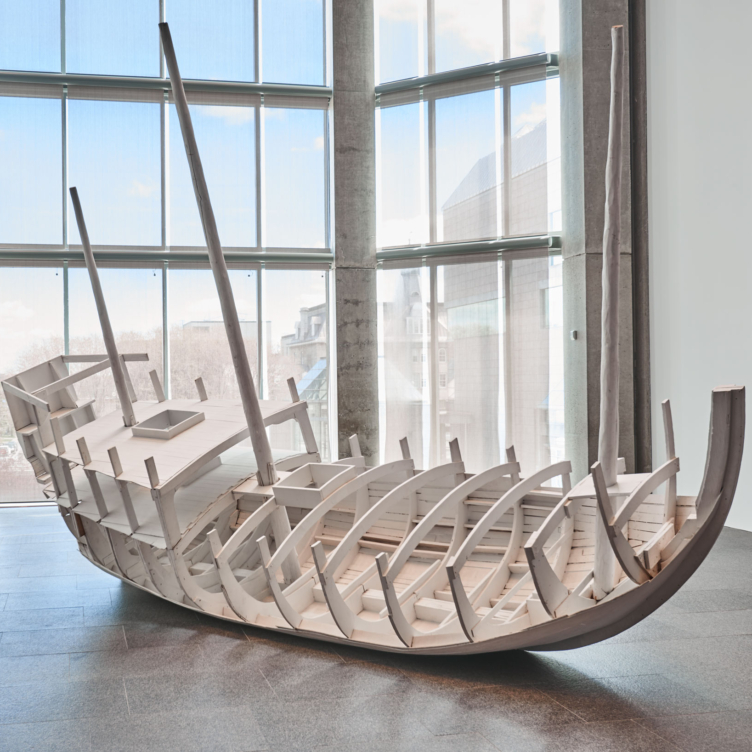 Vessel of Despair
Vessel of Despair
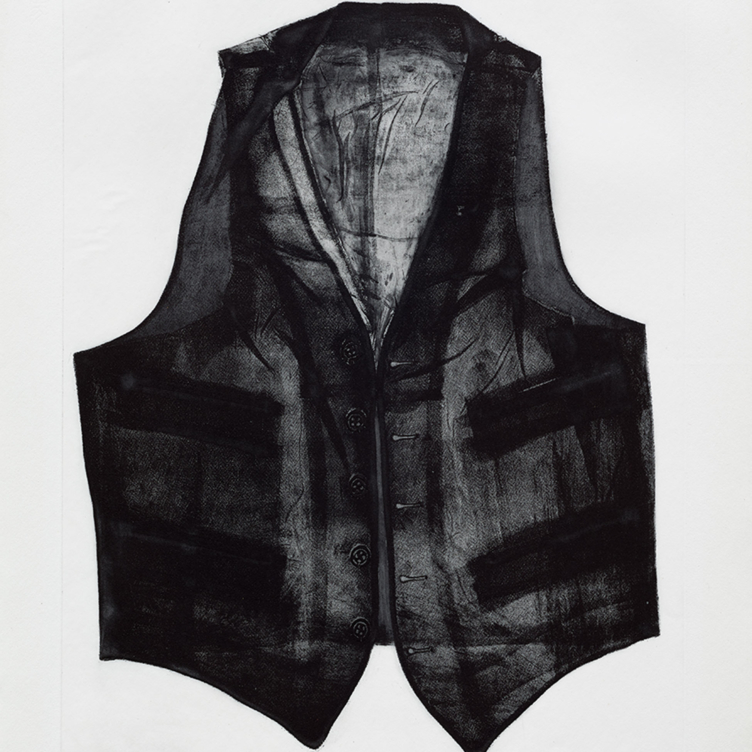 Layers of Meaning
Layers of Meaning
 In Parallel to Nature
In Parallel to Nature
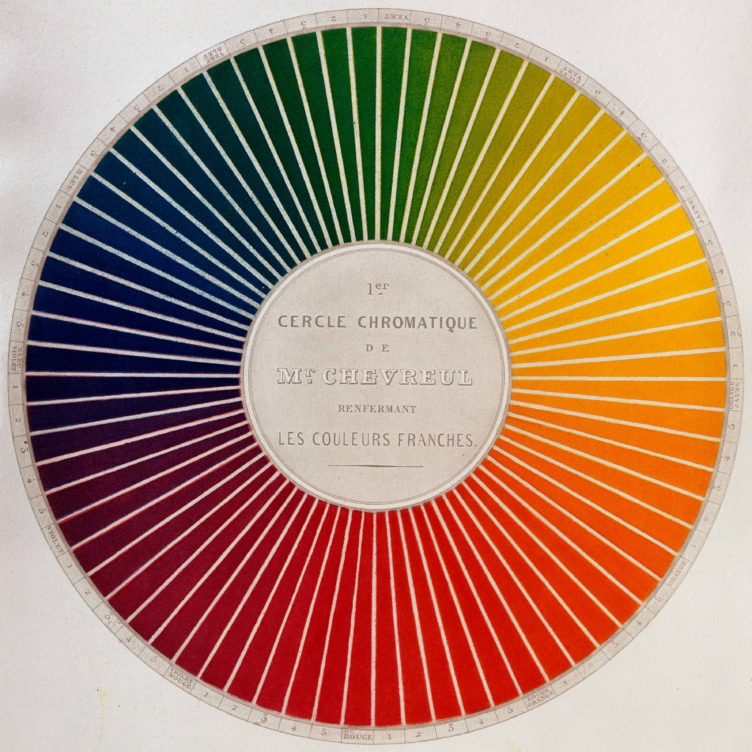 Wheel of Fortune
Wheel of Fortune
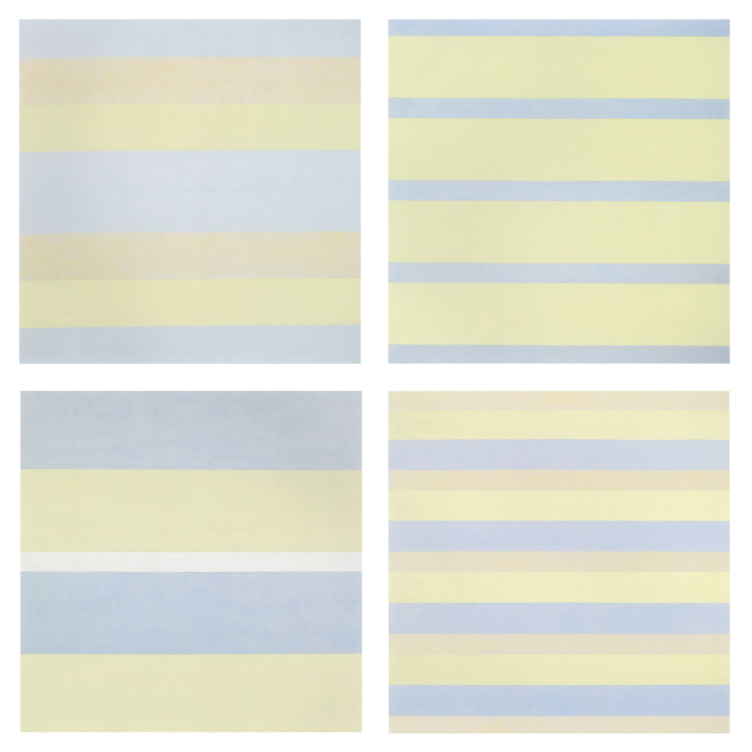 Paintings after emotional states
Paintings after emotional states
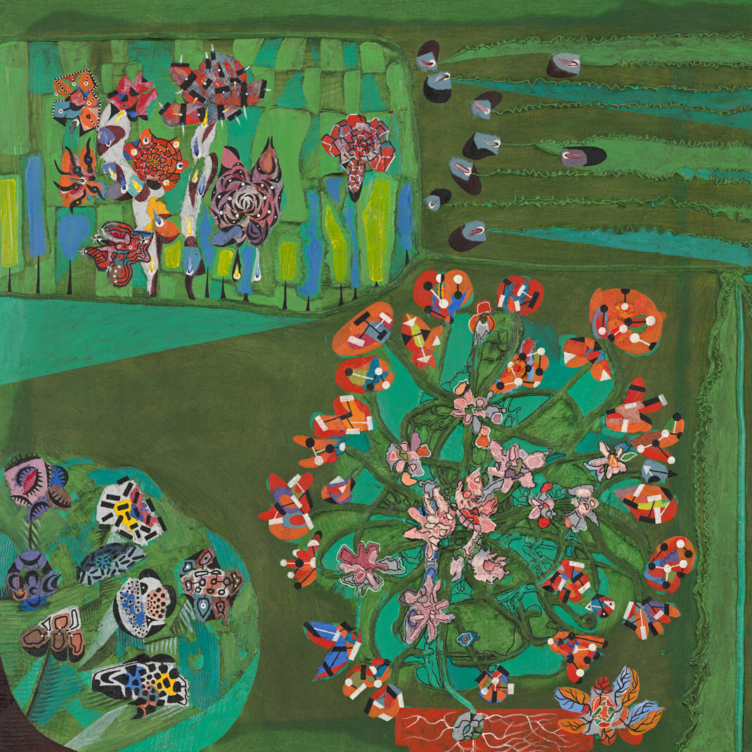 Garden of Delight
Garden of Delight
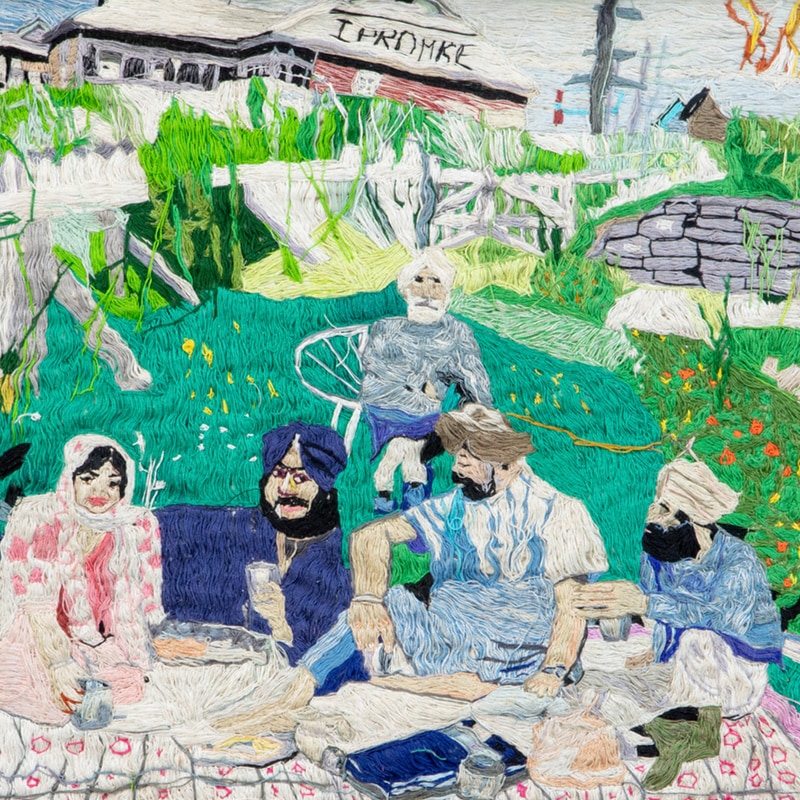 Stitching the Archives
Stitching the Archives
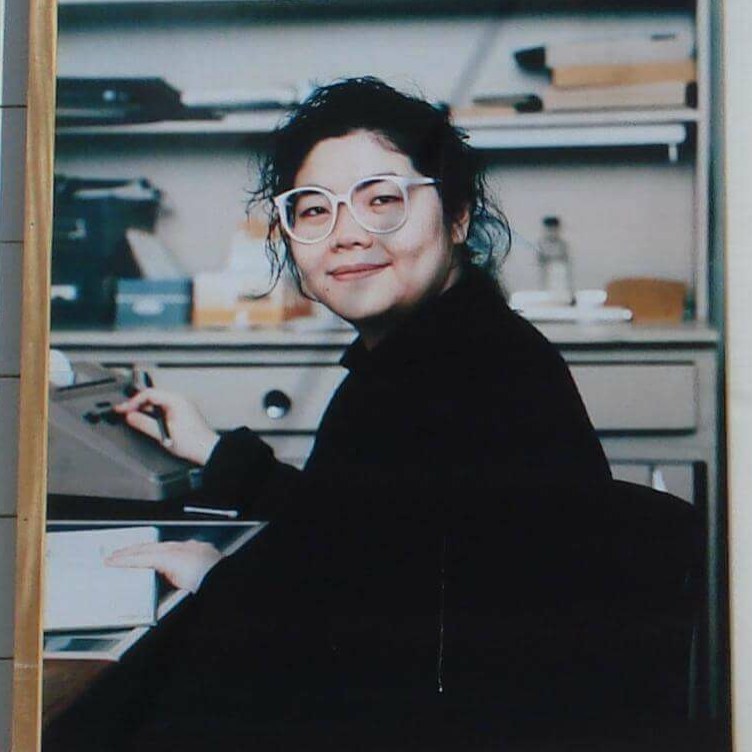 A Working-Class Hero
A Working-Class Hero
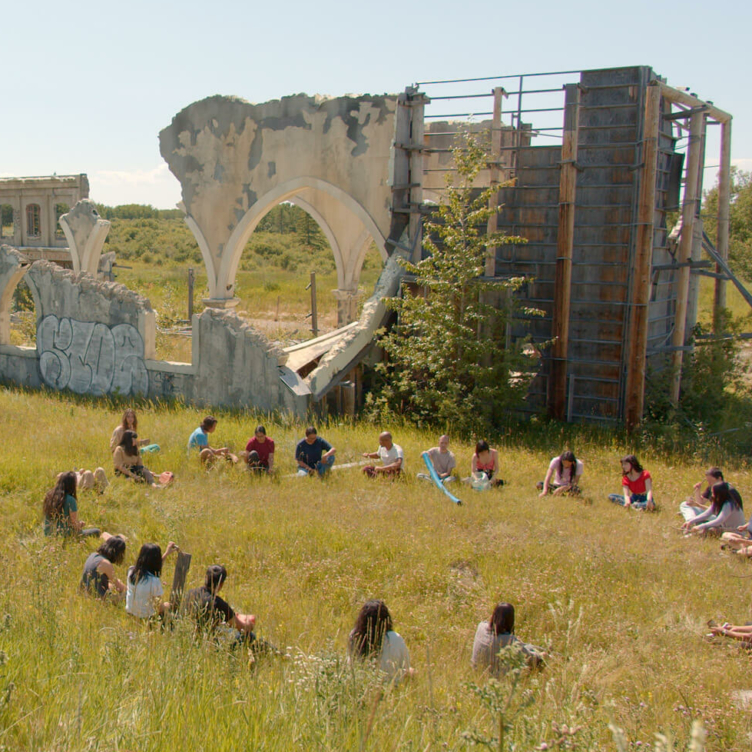 Imagining Entangled Futures
Imagining Entangled Futures
 Bridging Far and Near
Bridging Far and Near
 Soft Power
Soft Power
 Imagining Emancipation
Imagining Emancipation
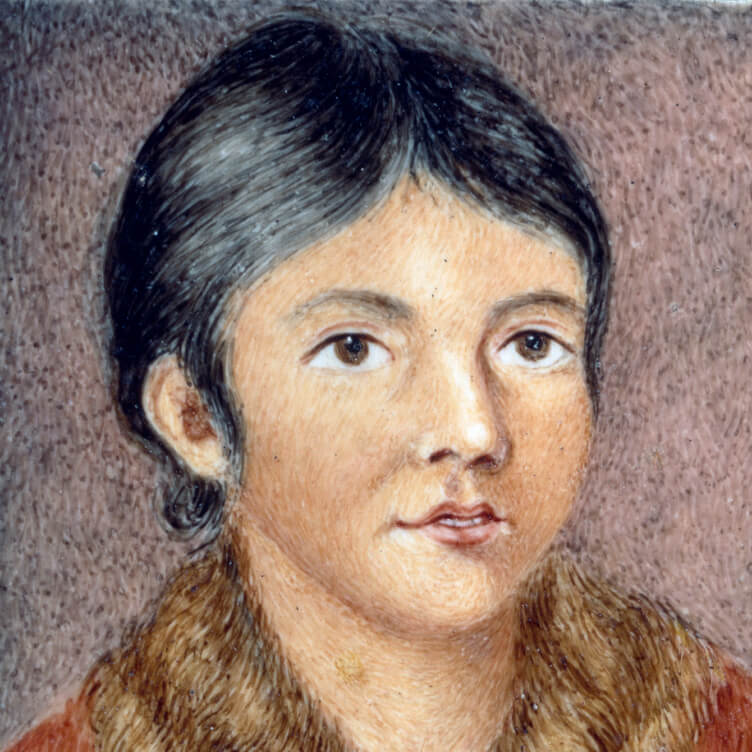 A Priceless Portrait
A Priceless Portrait
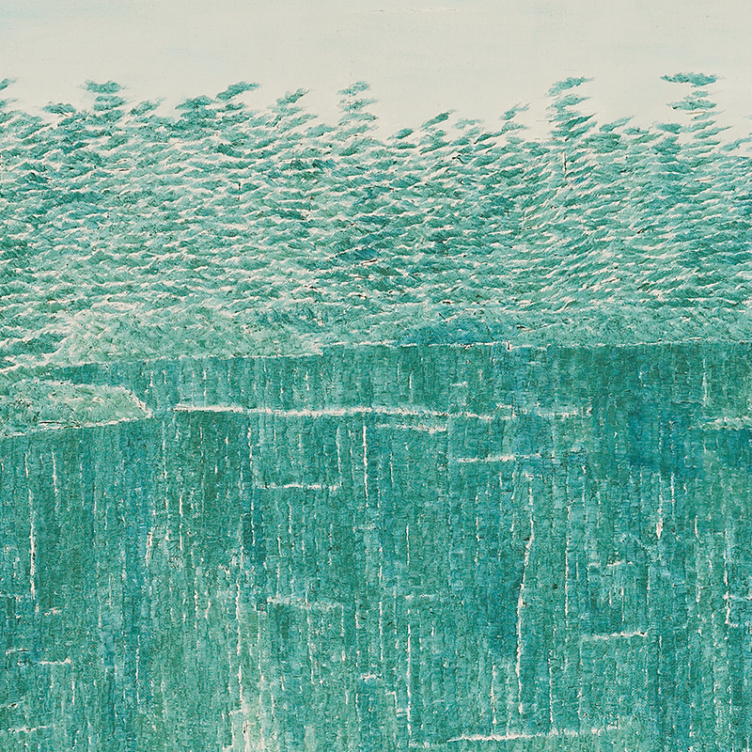 Meditation in Monochrome
Meditation in Monochrome
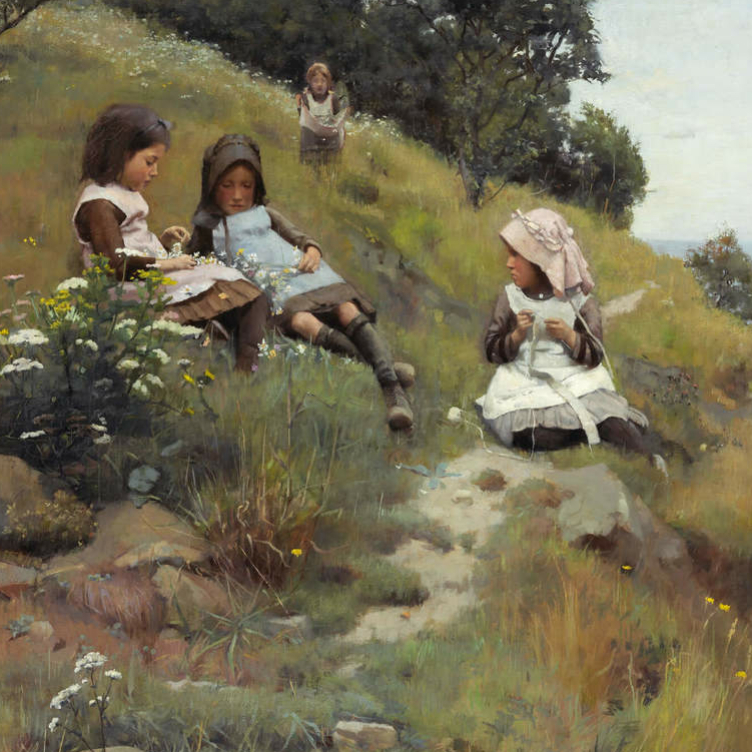 Making His Mark
Making His Mark
 Honour and Sacrifice
Honour and Sacrifice